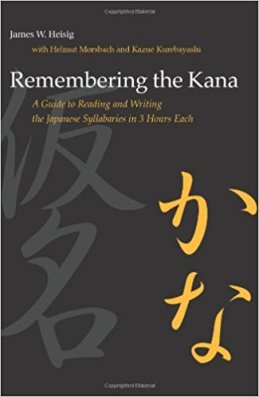
Japanese From Zero:
If you are starting from scratch with Japanese, this may be the right book for you. The focus is on learning vocabulary and the slow introduction of Hiragana. (One of the three writing systems in Japanese) Some may argue that using Anglicization of Japanese words serves to stunt your progression through the language but other may find this pace useful. As the book progresses you will eventually learn more Hiragana which allows you read the entire Syllabary by the end of the book. Verbs are introduced quite late in the book which may frustrate some language learners who are attempting to advance in the language at their own rate. With that being said, it is surprising how much you will be able to speak and express without verbs using the vocabulary that the present. There are a lot of activities that can feel childish at times but do help to break up the content and reinforce your learning.
The Author, George Trombley, has developed a system that, if you trust in the process, should give you a great introduction to the language and set you well on your way to speaking with confidence! Additionally, George has a YouTube channel in which he presents a wide array of grammar points and difficulties that English speakers have with Japanese which is a great companion to the book.

Remembering the Kana:
Learning Hiragana and Katakana is often regarded as essential early on in your Japanese studies. This book presents both syllabaries in a unique and easy to remember way. Using visual memory techniques you will acquire and retain the syllabaries in a short time. Although the visual aids will not work for everyone and some may find themselves creating their own connections and mnemonics to learn the Kana, this book does train your brain to think along those lines and offers a unique approach to learning. If you have experience with Chinese or Korean already or are adept at memorizing things using visual aids this may not be new or incredible useful information for you. However, if you are new to Asiatic languages, especially those using writing systems the differ greatly from the Latin alphabet; Remembering the Kana can help you move past this first hurdle in record time.

Japanese – Step by Step:
This is a totally different approach to learning Japanese. The book is quite mechanical in its approach and uses a very structured system to present grammar and sentence construction. Flow charts and tables are also used a lot for reference and guidance. This may not be the best approach for everyone, but if you tend to be a more analytical thinker and like to dive into grammar rules and structure when learning a language this book may be a good fit for you. Another difference from the aforementioned resources is the lack of Kana in this book. Romanji is used throughout the book which can be a turn off to a lot of people interested in being able to read the language and truly master pronunciation.
Overall, if you are looking for a more structured and rule based approach to Japanese you will surely find this book useful whether you are just starting out or using it as a reference.

Japanese Tutor:
This book is a great compliment to the beginner – intermediate Japanese student. This isn’t a “teach yourself” type book and you will definitely require some previous knowledge of the language. What this book does excel in is providing tons of exercises and practice to help you improve your grammar and expand your vocabulary. The book is organized quite well and presents a wide array of activities to challenge and reinforce your knowledge. Unlike most workbooks – there are a number of exercises that let you create your own sentences which is much more effective than exclusively doing a multiple choice or fill in the blank type activity. This is a great companion book for anyone working through the upper beginner to intermediate levels of the language.

Basic Japanese Grammar :
This is another option for a compendium book to use alongside with other resources. The book is thorough and organized approach to grammar and sentence structure with plenty of examples. It uses both kana and Romanization which is a good balance for those that haven’t yet fully committed to one system. There are plenty of example sentences and chapter reviews which helps to reinforce new concepts. The explanations are simple and tend to avoid overly complicated wording which makes them easy to follow and understand.

Barron’s Japanese Grammar:
This is a small little reference book but it packs in a lot of great information. It is small enough to fit in your pocket and has a well organized presentation of grammar and language points that are easy to access. This book really comes in handy for a quick reference when you encounter a part of speech or grammar point that is giving you trouble. Most of the explanations are simple enough to read through quickly but detailed so that you have a thorough understanding. There are relevant examples so that you can see the grammar in action. There is also a quick reference section for particles which can be especially difficult for beginners. For its size and detail, this book is a great addition to your Japanese resources.